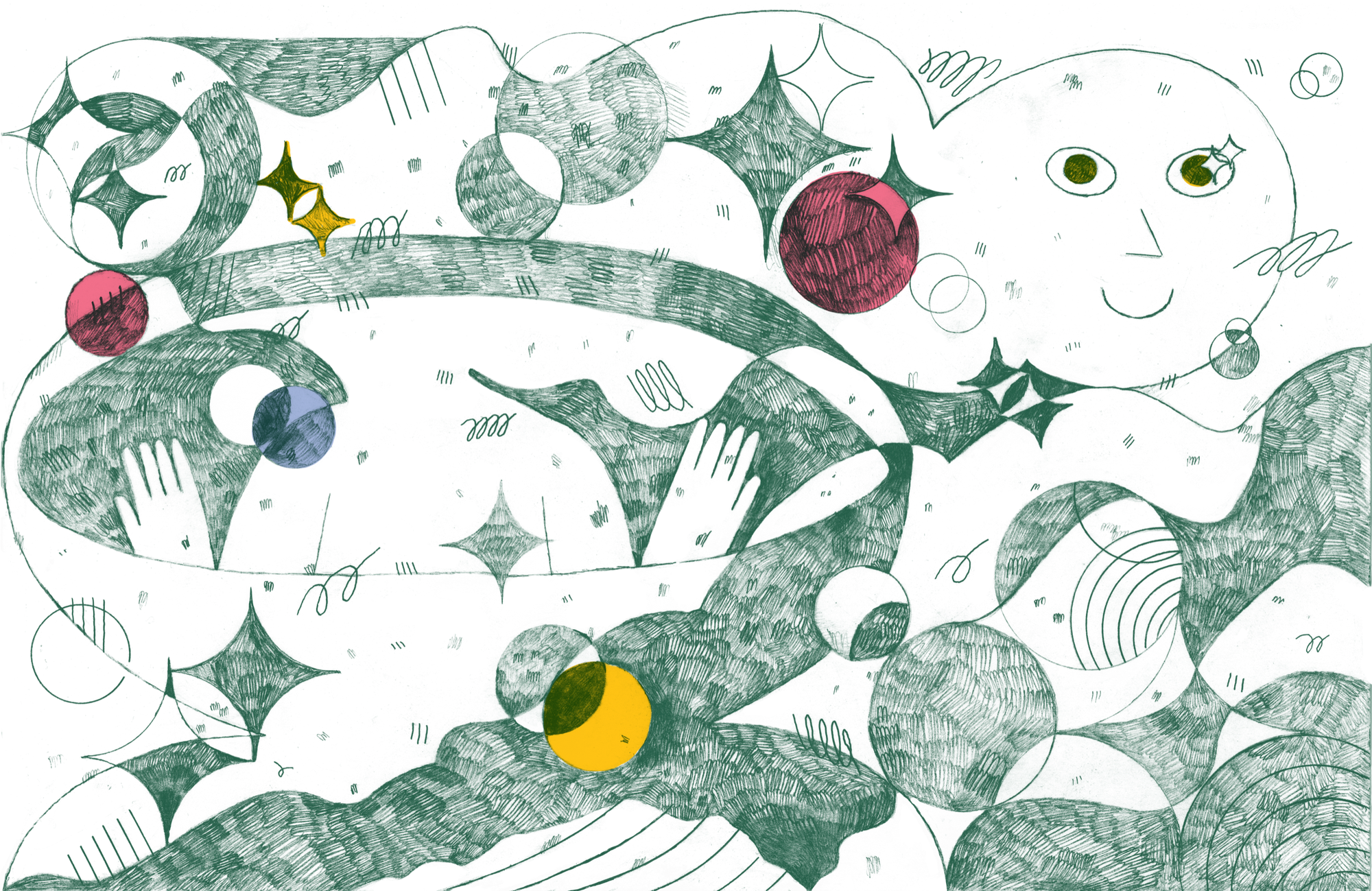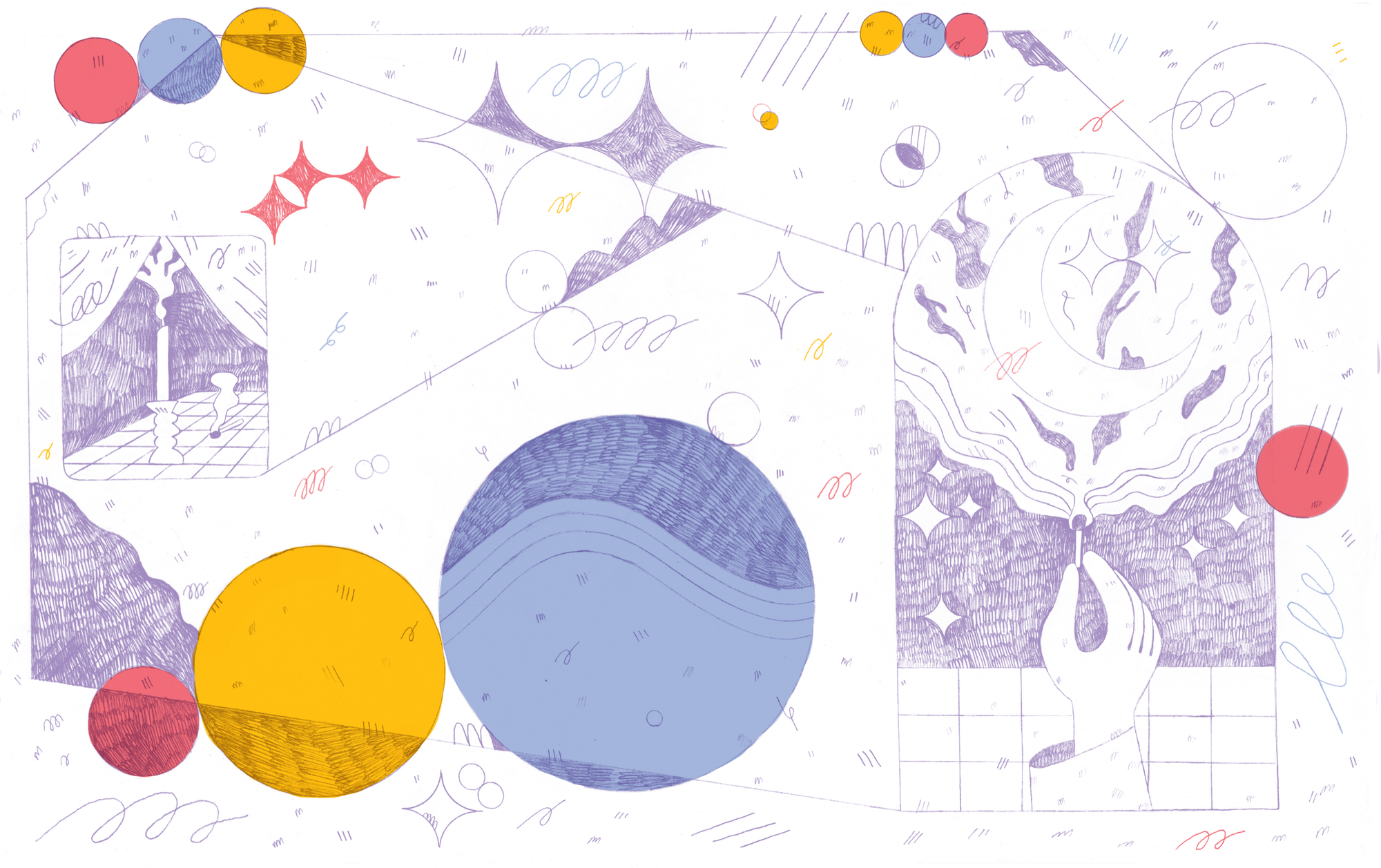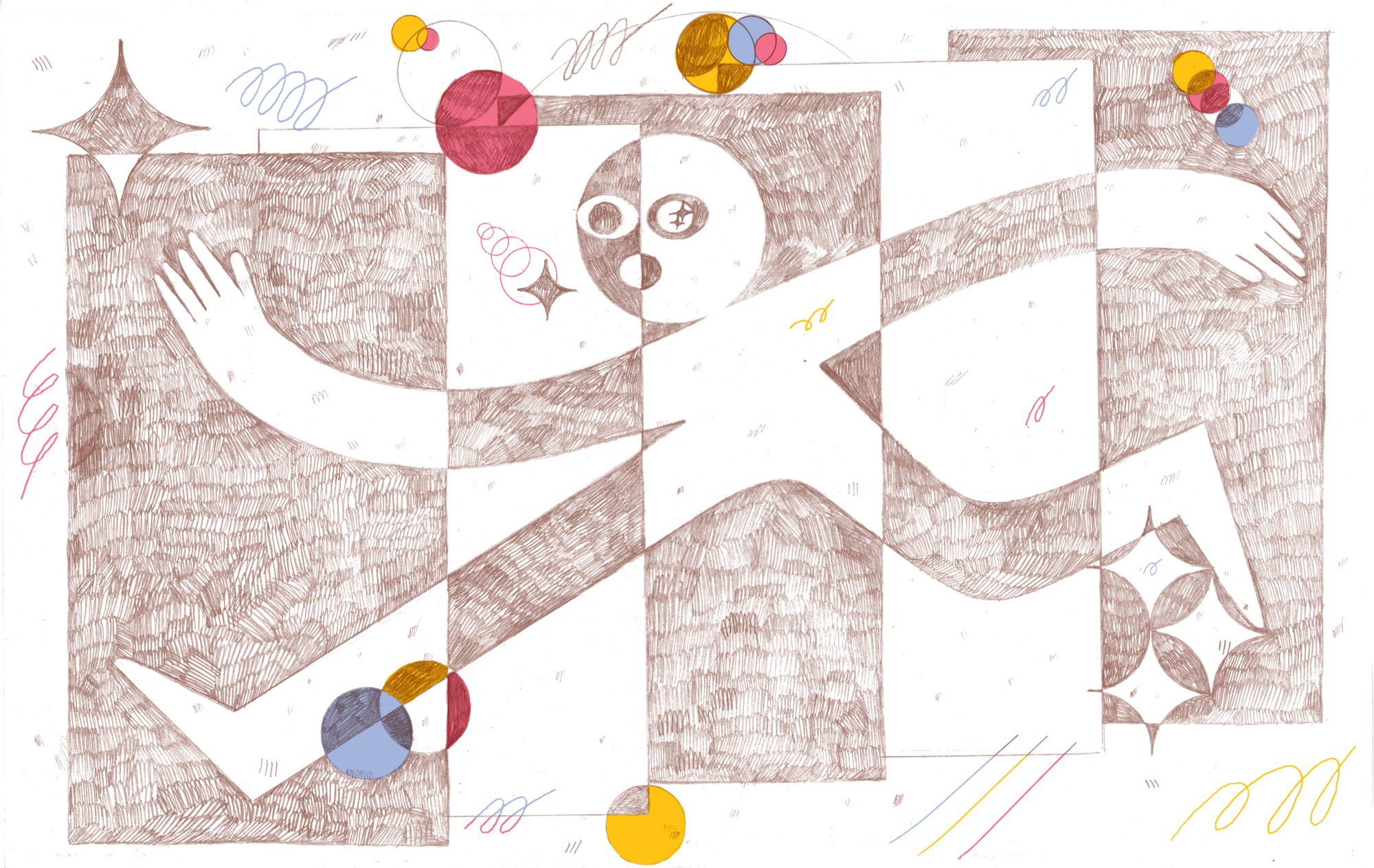How to start (and keep) a dream journal
Each night, you spend roughly two hours dreaming, whether you remember your dreams or not. Considering that nearly one-third of our life is passed in a state of slumber, overlooking dreams would mean dismissing a sizable chunk of our existence that is rich in imagery and insights. If dreaming is an inherent part of the human experience and one of the rare interludes of daily life when we’re momentarily free from the tentacles of capitalism – as Jonathan Crary argues in 24/7: Late Capitalism and the Ends of Sleep – why don’t we pay more attention to these nightly visions?
Even though I had vivid dreams growing up, it wasn’t until I had a terrifying episode of sleep paralysis nearly ten years ago that my fascination with the dream experience intensified. Since then, I’ve been writing down my dreams upon waking almost every day. Many of us are cognizant that events from the day can seep into our nocturnal realms. One thing that stood out to me once I began paying attention to my dreams is how frequently it happened the other way around. My dreams would trickle into my waking life, coloring my moods, sparking new ideas, amplifying and alleviating anxieties, spurring personal insights and, occasionally, influencing my decisions.
In 2019, I launched ONEIRIC.SPACE, an experimental research platform, with the help of fellow writer Effie Efthymiadi and Studio Push. By interviewing experts and creatives from multiple disciplines, our aim is to shed light on how people relate and engage with dreams in contemporary contexts. Through the online magazine, monthly newsletter and events, we hope to spark more dialogue and collective learning around dreams and dreaming.
One thing we’ve learned is that dream journaling is one of the most accessible and effective ways of capturing bits and pieces of this ephemeral nocturnal realm. For this reason, I hope this guide piques your curiosity about how dreams intertwine with our waking lives and helps you start the practice of recording, and perhaps drawing meaning from, your dreams.
– Charmaine Li, writer and editor
Why pay attention to dreams?
“Dreaming is the art of the mind. Every dream is intrinsically a creative experience. As the artists of the night, we are co-participants in weaving new creations from the complexity of our entire being.”
— Fariba Bogzaran and Daniel Deslauriers, Integral Dreaming: A Holistic Approach to Dreams (2012)
Dreams have long played an important role in cultures and religions across the globe, from ancient Mayan civilization to the Taoist tradition. It’s a phenomenon that we all have access to, regardless of age, gender, race, culture, religion or class.
In the late nineteenth and early twentieth century, Sigmund Freud and Carl Gustav Jung, two critical figures in the origins of psychology, were fascinated by dreams as a window into the unconscious mind. For a long time, many people thought sleep was a period when the brain was resting and mostly inactive. However, in the 1950s, scientists discovered rapid eye movement (REM) sleep, the phase of sleep primarily associated with vivid dreaming. Even though researchers are still unclear about why we dream, there are increasingly more hypotheses about the potential functions of dreaming.

Dreams can help us digest our emotions.
When it comes to the dream world, nothing seems to be off-bounds. Uncomfortable emotions that we avoid in our waking experience can seep into our nightly visions. A garish poster that makes you flinch on your walk to work can make an appearance in your dreamscape. Researchers believe that dreams are shaped by fleeting feelings, thoughts, desires and fantasies throughout the day and that dreaming is a way to help us sort through relevant and non-essential information while asleep.
Dreams may have a survival function.
Evolutionary theory suggests that nightmares may help us adapt to potential real-life situations. According to the “threat simulation theory,” dreams allow us to practice moving through stressful environments in order to help us prepare for fear-inducing circumstances in the waking world. That might explain why dreams are often accompanied by falling, running away from someone or something, or finding ourselves in embarrassing conundrums.
Dreams have creative potential.
A large number of prominent cultural ideas and scientific innovations were born first in their creator’s dreams, from Mary Shelley’s Frankenstein to Dmitri Mendeleev’s periodic table. Creatives and thinkers of all stripes have been fascinated by dreams and drawn material from these nightly visions for their work, including novelist Margaret Atwood, film director Akira Kurosawa, writer N.K. Jemisin and fashion designer Iris van Herpen. Studies have also shown that sleeping and dreaming can stimulate creative ways of thinking.
How can a dream journal be a valuable source of insight and creativity?
First and foremost, working with dreams involves remembering them by recording them upon waking. Without a written or audio account, the dream can quickly fade away or mutate into different versions over time because of how human memory works.
Even though nearly all of us have had a few dreams in our lives which have been so vivid and strange that we can recall them with ease years later, many people can’t recall their dreams regularly. There are many reasons for that, ranging from an individual’s sleep habits and changes in our routine to our “wake-centric” cultural bias and the social stigma surrounding conversations about dreams.
Studies have shown that we tend to remember dreams that include experiences with a stronger emotional pull, and writing them down can be a way to confront these feelings. Personally, writing down my dreams has been an invaluable way of becoming more aware of my inner life and the host of half-conscious feelings suffused in my being that needs my attention. I’ve certainly noticed that if I wake up feeling shaken by fear, awed by a beautiful scene or healed by a dream image, I’m more likely to write down longer entries and engage with the content in waking life than if I wake up from a dream experience feeling indifferent.
Keeping a dream journal can also be a vehicle for creativity. In the ineffable world of dreams, the basic structures organizing waking consciousness no longer apply. Time is no longer linear. The sense of your self and others may be more fluid. Nonsensical narratives and forms emerge. We can experience perspectives from different people at once. There’s accumulating evidence that remembering our dreams can boost creativity. However, a crucial part of sustaining these flickers of creativity past the morning after is to record them in some way.
How do I start a dream journaling practice?
Starting a dream journal is pretty straightforward. It’s more about having an open mind and experimenting than following rules. Having said that, there are tips that dream experts recommend to improve dream recall and start your own dream journaling practice:
-
Set an intention to explore your dreams. Simply deciding that dreams deserve your time and attention might be enough to spark dream recall over time. Some researchers recommend repeating a phrase to yourself before going to sleep, such as “Tonight, I’m going to remember my dreams” to reiterate your motivation and desire to remember and learn from dreams.
-
Experiment with different modes of dream journaling and decide what works best for you. No matter how vivid your dreams seem to be upon waking, if you don’t make an effort to record them, they often disappear from your memory within a few minutes or hours. Your journaling method doesn’t need to be fancy—it can be a notebook and a pen, an app on your smartphone, or a voice recorder (however, if you go with the latter option, it’s worth noting that it may be difficult to investigate and retrieve audio entries once you’ve recorded a lot of them). The important thing is to have your set-up next to your bed so you can capture your dream without moving around much.
I have personally found it very valuable to keep a journal that includes events from my waking life and dream life in one place. I separate waking entries from dreaming entries by using a hyphen, and since I often remember several dreams in one night, I use the tilde symbol (~) to mark what I perceive to be different dreams. This helps me make connections between the two realms more easily. -
When waking up, try to remain as still as possible in your body. Let the dream memories come to the surface while half-asleep. An abrupt awakening can lead to blinding forgetfulness. Instead, try to reenact the dream events in your mind. Moving slowly and gently, jot down your recollections, draw your dream images, or whisper them into your voice recorder. This act of recording your dreams on a regular basis can help with improving dream recall.
-
Share your dreams with people you trust. This can also aid in dream recall. What’s more, I’ve found that hearing myself recount a dream aloud to a partner or friends can sometimes lead to insights that may not have emerged while writing. Interestingly, my experiences of sharing have also shown that it can heighten certain senses in my dreams. For instance, after talking about my dreams with a friend who is very perceptive to sound in space, I had a dream where I could hear sound through a door. It was the first time that the sense of hearing was so palpable to me in a dream.

A note on dream interpretation
One of the most common questions people ask when discussing dreams is: What does this dream mean? There is a tendency to want to interpret it with certainty or to find a definitive meaning. Perhaps that’s why there are so many dream dictionaries online, even though dream researchers say they don’t have scientific backing nor carry much weight. Dreaming is an inherently subjective and singular experience. This means that the same dream symbol or image can mean different things to different people. It’s important to remember that dreams arise spontaneously from within us and there is still no consensus about whether dreams hold intrinsic meaning.
Having said that, paying attention to dreams can certainly be a source of insight into your interior life. One way to reflect on your dreams is to look for patterns or recurring themes. Another approach is to examine the salient elements of a dream, such as setting, people, emotions, objects or plots in a dream. Ask yourself, what do these elements mean to you personally? What kind of associations do you have with them? How did you feel when you woke up? Only you know what a dream or its metaphors might mean to you. My own experiences with this kind of self-inquiry has revealed that one dream can have many layers of meaning and can unfold over a period of time. Of course, if you’d like to delve deeper into your dreams and have the means to do so, there is also the option of working with a psychotherapist or dream expert.
Contrary to popular belief, interpretation isn’t the only way to work with dreams. There are also ‘non-interpretive approaches,’ which Fariba Bogzaran defines as “organic in nature, expressive and open-ended. They invite the dreamers and specialists to cultivate, refine and recognize the subtle arising of thoughts, emotion, and somatic experience. While not grasping to any immediate meaning, the process allows the creative mind naturally to organize the emerging insights.” At its core, these approaches consist of creative ways of engaging with a dream without having a particular intention in mind. Below are some exercises I’ve tried myself or have come across while researching how creatives work with dreams.

Creative exercises stemming from dreams:
-
Try ”automatic writing”: Originating from the Surrealists, this mode of expression involves writing spontaneously without thinking. After waking up from a dream, reach for your notebook and scrawl down everything that comes to you. Don’t think about grammar, structure or logic, simply write until you naturally stop. Go back to it a couple of days or weeks later and see if anything resonates.
-
Draw and/or paint: Dreaming is a predominantly visual experience and sometimes translating it into linear form like writing can feel incomplete. Instead, sketch out dream images in your journal immediately upon waking. If you feel like further interacting with this imagery, try painting it or 3D rendering them like Studio Brasch does.
-
Stage a photoshoot: Take a page from Synchrodogs’ book. The Ukrainian photographer duo created the series ‘Reverie Sleep’ by waking themselves up in the middle of night and jotting down what they saw in their dreams. Afterward, they would stage photoshoots based on these notes.
-
Use movement and the body: Last year, I met Berlin-based choreographer and performer Anna Nowicka, who hosts workshops where participants expand dream material, like written accounts or images, by using the body to “add volume”. Although I haven’t had the chance to attend one of her workshops yet, I loved the idea of exploring a dream by embodying elements of it through movement.
As you experiment with taking inspiration from your dreams, know that your approach doesn’t have to be too structured. Both the interpretive and non-interpretative approaches can be used to complement each other when working with dreams, and it’s worth trying a few approaches until you find a way of journaling and creating that feels helpful and illuminating for you on a personal level.
Summary
Suspended in the liminal state between wakefulness and sleep, the sliver of time after waking seems to be the only part of the day when we’ve been soaked in our interior lives for hours on end without external influences. Dream journaling is one way to capture the unfettered thoughts, emotions and images arising from this state of mind for a moment longer. When starting your dream journaling practice, your openness and receptivity to the dream world is more important than following guidelines to a tee. As with everything else, practice and patience helps. Remember, only you know the significance of your dreams.
Charmaine Li is a Toronto-born writer and editor based in Berlin, Germany. She mostly covers art, design and technology—and the ways in which they intersect. Her writing has appeared in print and online publications including Newsweek, AnOther Magazine, CNN Travel, Dazed Digital, Broccoli Magazine and Kinfolk, among others. She is the founder of ONEIRIC.SPACE, an experimental research platform exploring our relationship to dreams and the unconscious. It consists of the online magazine www.oneiric.space, a monthly newsletter and events.

